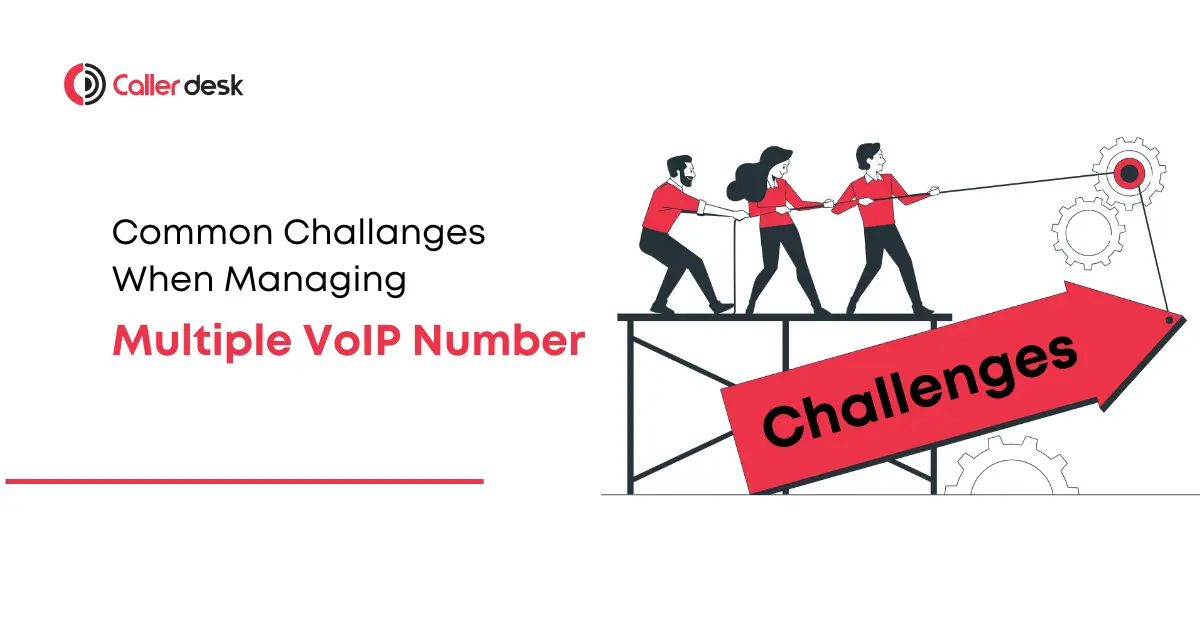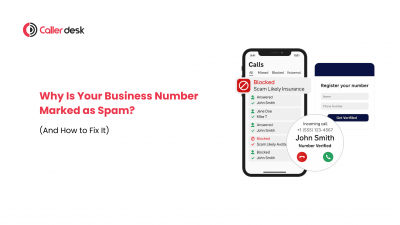Imagine this scenario:
Your business is growing, your team is expanding, and you’re managing customers across different regions. To keep up, you’ve implemented multiple VoIP numbers to streamline communication. But as your VoIP system expands, so do the challenges of maintaining efficiency and customer satisfaction.
While having multiple VoIP lines offers flexibility, scalability, and the ability to cater to diverse customer needs, it’s not without complications. Effective management is crucial to prevent these benefits from turning into liabilities. This article will delve into seven common challenges of managing multiple VoIP numbers and practical solutions to overcome them.
Why Multiple VoIP Numbers Are Valuable for Businesses
Before discussing the challenges, it’s important to understand why businesses adopt multiple VoIP numbers:
- Enhanced Reach: Serve customers across various regions with localized phone numbers.
- Flexibility: Allocate specific numbers to departments or teams for better organization.
- Cost-Effectiveness: Compared to traditional phone lines, VoIP is more budget-friendly and scalable.
Now, let’s dive into the potential hurdles and their solutions.
1. Tracking and Organization
Assigning VoIP numbers to different teams or departments without a proper system can lead to chaos. Mismanagement often results in:
- Missed calls
- Inefficient workflows
- Confusion among team members
Solution:
Adopt a centralized tracking system to allocate and monitor VoIP numbers effectively. Tools that provide real-time tracking and role-based assignments can streamline operations.
2. Call Quality and Stability
Managing multiple VoIP numbers increases your network’s bandwidth requirements. This can result in:
- Dropped calls
- Delays in audio transmission
- Poor sound quality, especially during peak hours
Solution:
- Invest in high-speed internet with adequate bandwidth.
- Prioritize VoIP traffic through Quality of Service (QoS) settings to ensure stable connections.
3. Data Security Risks
Each additional VoIP line introduces potential vulnerabilities, increasing the risk of:
- Unauthorized access
- Data breaches
- Compromised sensitive client information
Solution:
- Use end-to-end encryption for all calls.
- Regularly update your VoIP software.
- Implement multi-factor authentication (MFA) for added security.
4. Handling High Call Volumes
For businesses that rely heavily on phone interactions, high call volumes can lead to:
- Unanswered calls
- Long wait times
- Frustrated customers
Solution:
- Deploy automated systems like Automated Call Distribution (ACD) and Interactive Voice Response (IVR) to ensure calls reach the right departments promptly.
5. Integration Issues with Existing Systems
VoIP systems need to work seamlessly with:
- CRMs
- Helpdesk software
- Other business tools
Poor integration disrupts workflows and creates data silos.
Solution:
Choose VoIP providers offering APIs and pre-built integrations for popular business platforms.
6. Monitoring and Reporting Complexity
Tracking performance metrics like missed calls, response times, and call durations across multiple numbers can be overwhelming.
Solution:
Invest in a VoIP platform with built-in analytics and reporting dashboards to gain actionable insights and improve overall performance.
7. Cost Management
Managing expenses for multiple VoIP numbers can become challenging, especially with:
- International calls
- Premium features
- Escalating subscription costs
Solution:
Conduct regular cost audits and explore bundled plans from VoIP providers. Use platforms offering real-time cost tracking to manage your budget effectively.
How to Overcome VoIP Challenges
To navigate these challenges effectively, consider implementing a robust VoIP management solution that provides:
- Centralized Management: Simplify operations with real-time visibility across all VoIP numbers.
- Advanced Analytics: Use data-driven insights to improve performance and customer satisfaction.
- Cost Optimization: Regular reviews and optimization of VoIP setups to align with business goals.
Pro Tip
Managing multiple VoIP numbers doesn’t have to be a headache. With CallerDesk, you get a powerful solution designed to simplify your communications, boost efficiency, and keep your business running smoothly.
From seamless CRM integration to advanced analytics and robust security, CallerDesk is built to tackle the challenges of modern communication.
But don’t just take our word for it—see the results for yourself. Schedule a free demo today or get a personalized quote to find out how CallerDesk can revolutionize your communication game.



